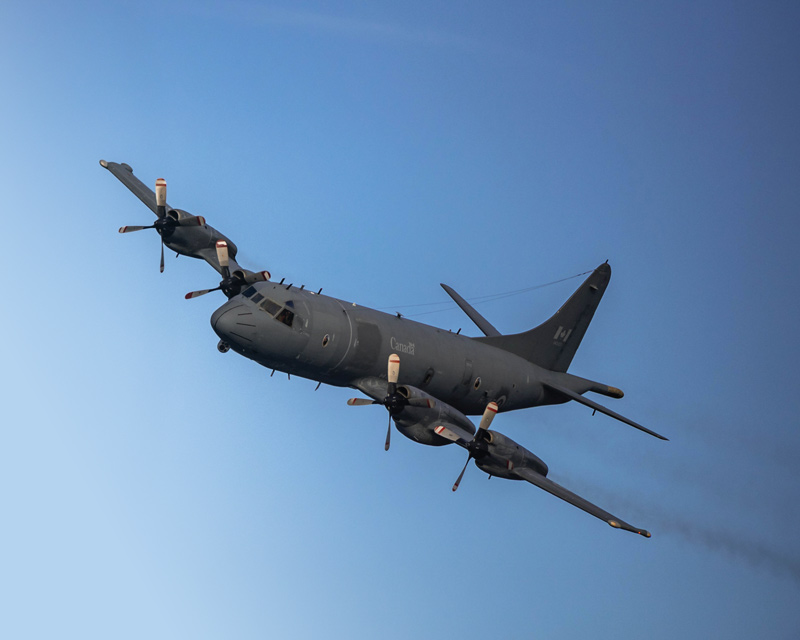
More than 40 years ago, the Canadian Armed Forces acquired a fleet of CP-140 Aurora aircraft. At the time, they were top of the line and have since served the air force and navy well. But now that it’s time for an upgrade, Ottawa must choose between a reputably built aircraft or simply the concept of a model that will create jobs in the country.
The Aurora is a four-engine, maritime-surveillance, reconnaissance and anti-submarine aircraft. Its airframe and engines were designed by Lockheed Martin, and it boasts an electronics suite from the Lockheed S-3Viking. It’s a derivative of the P3 Orion, as the Americans call it, which first flew in the 1960s.
Over the years, the CAF has spent hundreds of millions of dollars upgrading the aircraft to keep it up-to-date, recently spending a final $52 million to ensure the fleet can fly for most of another decade. These modernization initiatives, which have improved the airplane’s surveillance and reconnaissance capabilities and strengthened perceived weaknesses in the airframe, have turned the Aurora into a capable airplane, though still an old one.
As military journalist David Pugliese reported this past May in the Ottawa Citizen, the federal government is now looking at a replacement for the Aurora and has approached Boeing to discuss purchasing 16 P8Poseidon aircraft—a military version of Boeing’s 737-7 airliner—under a provision that allows it to make a sole-source purchase if it deems there’s only one option that suits its needs.
The provision was used several times after Canada joined the war in Afghanistan, including, for example, its acquisition of the BAE Systems M777 towed howitzer in the early 2000s. Since it would take years for the P8s to be delivered, the recent refurbishment of the Auroras will allow Canada to deploy an acceptable maritime reconnaissance aircraft until then.
Enter Canadian business jet maker Bombardier, headquartered in Montreal. Knowing that Ottawa has approached Boeing, Bombardier, in partnership with General Dynamics which would supply electronics, is proposing to sell the CAF a maritime and surveillance aircraft based on its Global 6500 business jet.
Bombardier/General Dynamics noted that if Ottawa purchases its plane, the military would get a Canadian aircraft, built in Canada, which would also produce jobs in the country. The duo, as Pugliese reported, is urging Ottawa to “allow a competitive, fair and transparent procurement process.”
Boeing’s P8 is currently used by the U.S and Indian navies, as well as the air forces of Australia, the U.K., Norway and NewZealand.
Plus, the navies of South Korea and Germany have ordered them. The U.S. has had the aircraft in full operation for more than a decade.
Buying the P8 would be a safe option for Canada given that it’s a proven aircraft. Purchasing the Bombardier/General Dynamics option is riskier because it’s still a concept.
Let’s face it, Canada’s military procurement record is abysmal and no one seems to be able to fix it.
That said, Bombardier’s jets, now the company’s only line of business after it divested its rail transport unit in early 2021, are a hot commodity, responsible for quadrupling its profits since 2020. And the C-Series airliner it designed in the early 2000s—and for which Bombardier received roughly $1 billion in subsidies from the Quebec and Canadian governments—is considered an outstanding passenger aircraft. (It is now known as the A220 and built by Airbus in Montreal and Mobile, Ala.)
Regardless, the P8 is already flying with six countries and has been ordered by two more who are certainly capable of choosing an aircraft that best suits their needs. This, of course, points to yet another facet of this complicated story. Whenever Canada orders new equipment for its military that is built to its narrow specifications—such as the CH-148 Cyclone maritime helicopter, which didn’t even exist as a military aircraft until the country ordered it—it seems to result in delays, cost overruns, technical failures and other costly disruptions.
Let’s face it, Canada’s military procurement record is abysmal, and no one seems to be able to fix it. One solution is to buy “off the shelf” as Ottawa did with the aforementioned M777howitzer. Had it purchased ready-made warships, the vessels might have been in harbour by now. When Canada replaces its current fleet of submarines, it will almost certainly have to buy an existing model.
Hopefully the government has learned its lesson. The P8 has been flying for more than a decade. It will certainly suit Canada’s requirements. There’s no need for a competition this time.
Advertisement











